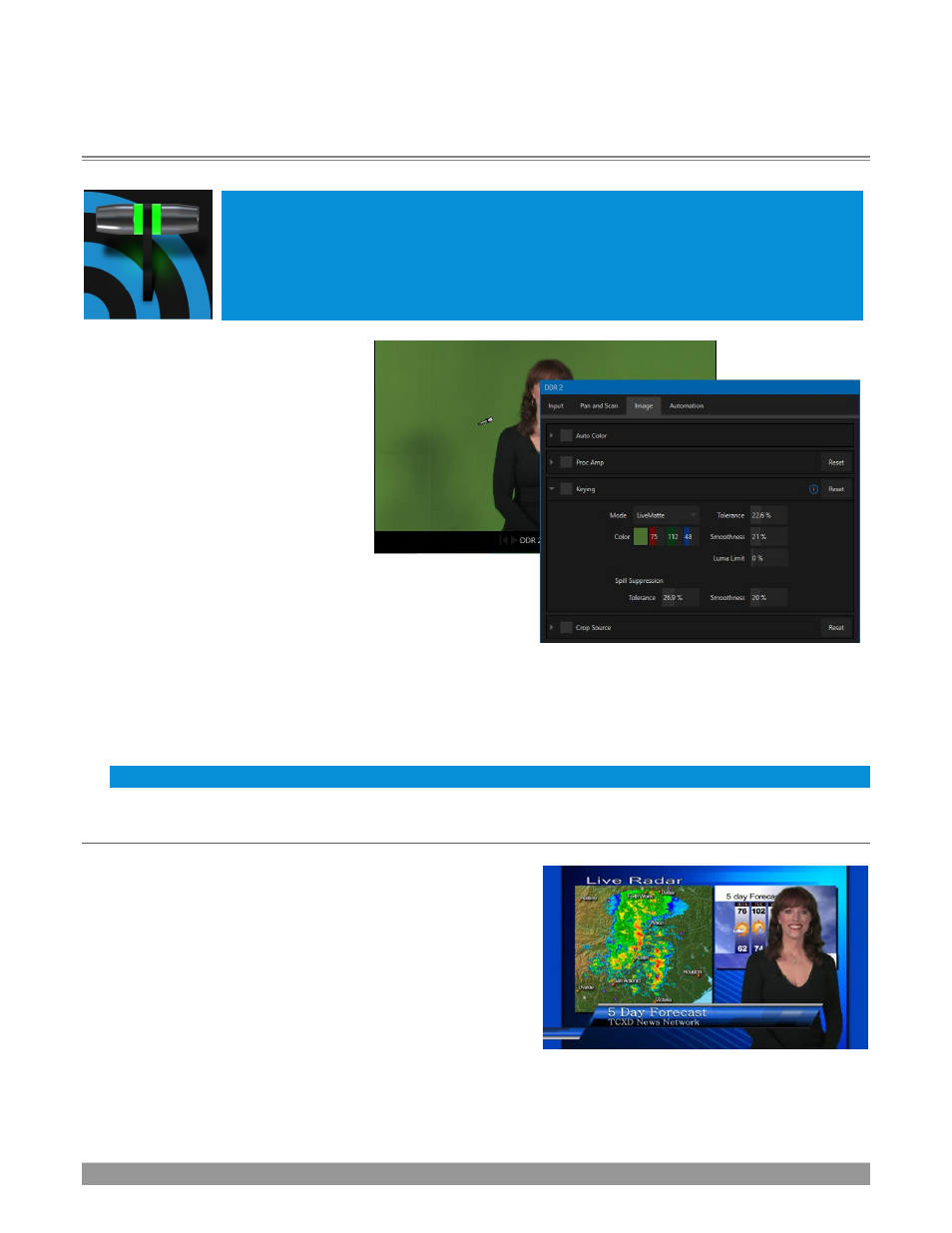Chapter 13, Livematte, Section 13.1 understanding keying – NewTek TriCaster TC1 (2 RU) User Manual
Page 153: Chapter 13 livematte

P a g e | 137
Chapter 13
LIVEMATTE
Although its controls are deceptively simple, the
LiveMatte™
feature employs powerful
chromakeying technology capable of extremely high-quality results. Used alone or in
conjunction with DSKs, M/E Overlays and LiveSet features, you will find LiveMatte can
play a ‘key’ role in your live production
s.
As we mentioned earlier,
chromakeying
–
or simply “keying” –
is used to combine images by
eliminating a portion of a foreground
image (effectively cutting a digital
‘keyhole’ in it) to reveal another
background. This method is also
used to insert talent seamlessly into
virtual sets via
LiveSet
™.
LiveMatte
™ controls are located in
an
expandable group in the
Image
tab of the
Input
Configuration
panel for each
Switcher
source. To access
them, click the
Configure
button (gear) that appears above
an onscreen monitor in the
All Monitors
tab.
The method by which part of the image is defined as transparent is generically referred to as chromakeying,
for its dependence on the color values (chrominance) of the video stream. (LiveMatte
’s mature
algorithms
far exceed typical chromakeying techniques to provide real-time results
, but for our discussion it’s not
necessary to get into all of the details; suffice to say it works very well, and is easy to configure.)
Hint: Crop controls in the Input Setting
s tab can serve as a ‘garbage matte’ tool for chromakey sources.
SECTION 13.1
UNDERSTANDING KEYING
Chromakeying has become an essential tool in video and film
production. Typically, foreground footage is shot in front of
a blue or green screen, and then that background color
–
the
key
color
–
is treated as transparent, allowing another image
to be inserted.
For example, when you see a tv meteorologist in front of a
weather map, that person is almost certainly posed in front
of a green screen. The background is
‘keyed out’
, to be
replaced by computer generated imagery.
FIGURE 166
FIGURE 167
